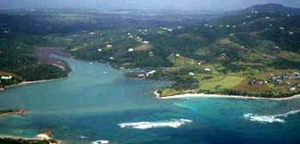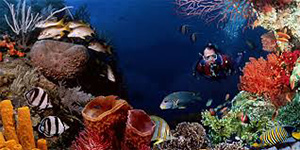| Error processing SSI file |
||
| Error processing SSI file |
||
| Error processing SSI file |
||
Error processing SSI file |
About Marine Protected Areas
Salt River Bay National Historic Park and Ecological Preserve
Salt River Bay National Historic Park and Ecological Preserve. On November 14, 1493, on his second voyage to the New World, Columbus came upon the island which the dominant Carib people called Cibuquiera ("the stony land"). He named it Santa Cruz or "Holy Cross". The fleet of 17 vessels (including the Niña, veteran of the first voyage) dropped anchor off the Salt River inlet, now in the US Virgin Islands. The admiral sent more than two dozen armed men ashore in his longboat to explore the native village on the west bank and search for sources of fresh water. This location is the first and only positively documented of two sites associated with Columbus on what is now U.S. territory. On a return to the flagship, having "liberated" some Taino women and boys enslaved by the Caribs at the village, the boat's crew encountered a canoe with Caribs (four males and two females) and one or two male Taino slaves, which had rounded the eastern cape of the bay. The Caribs readied their bows when the Spaniards approached too closely. The canoe was rammed and overturned, and a fierce but unequal skirmish ensued. 
Man scuba diving at Salt River Bay National Historic Park and Ecological Preserve. This hostile encounter, the first documented resistance to European encroachment by Native Americans, resulted in a fatality on each side. Columbus himself later named the site of the encounter Cabo de las Flechas or "Cape of the Arrows", in memory of the Spanish fatality. From St. Croix, Columbus' fleet first sailed northward and then west southwestward to San Juan Bautista (later renamed Puerto Rico). Today, visitors to the park can learn about five centuries of history, as well as snorkeling, diving, swimming and hiking. Did you know?
Learn more/get involved:
|
|
